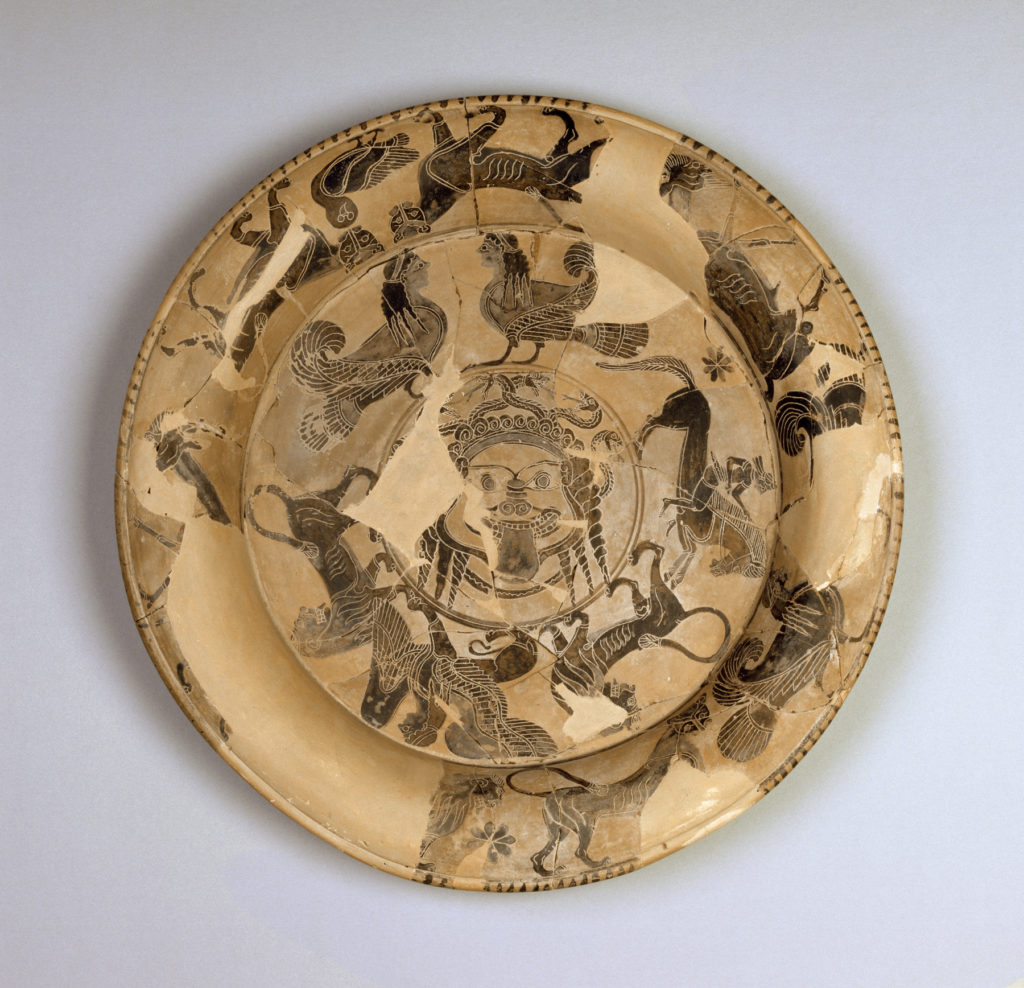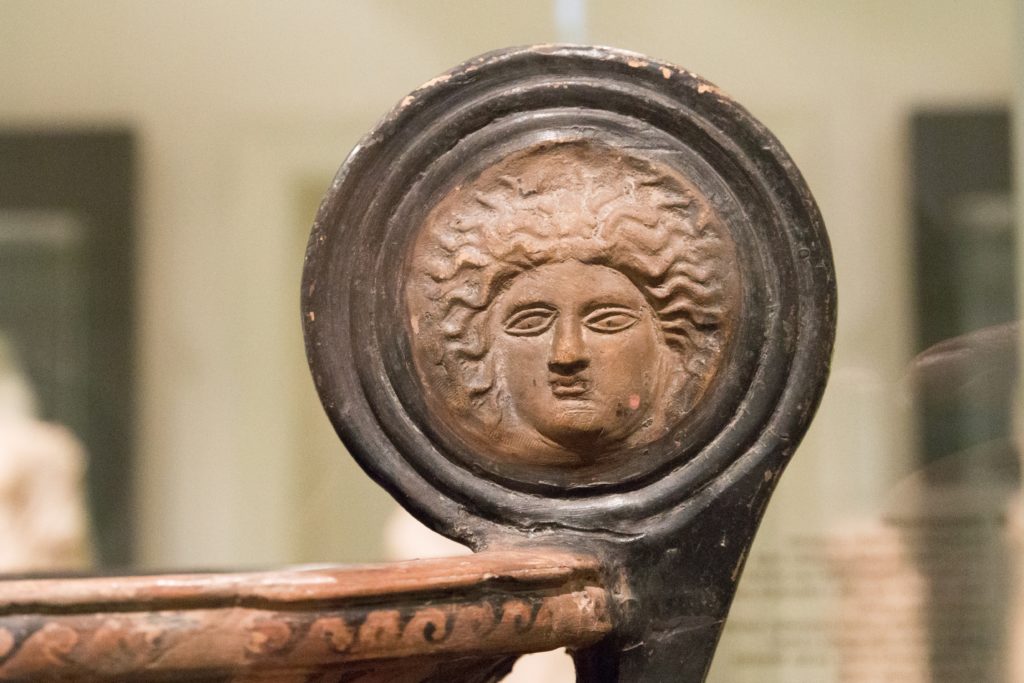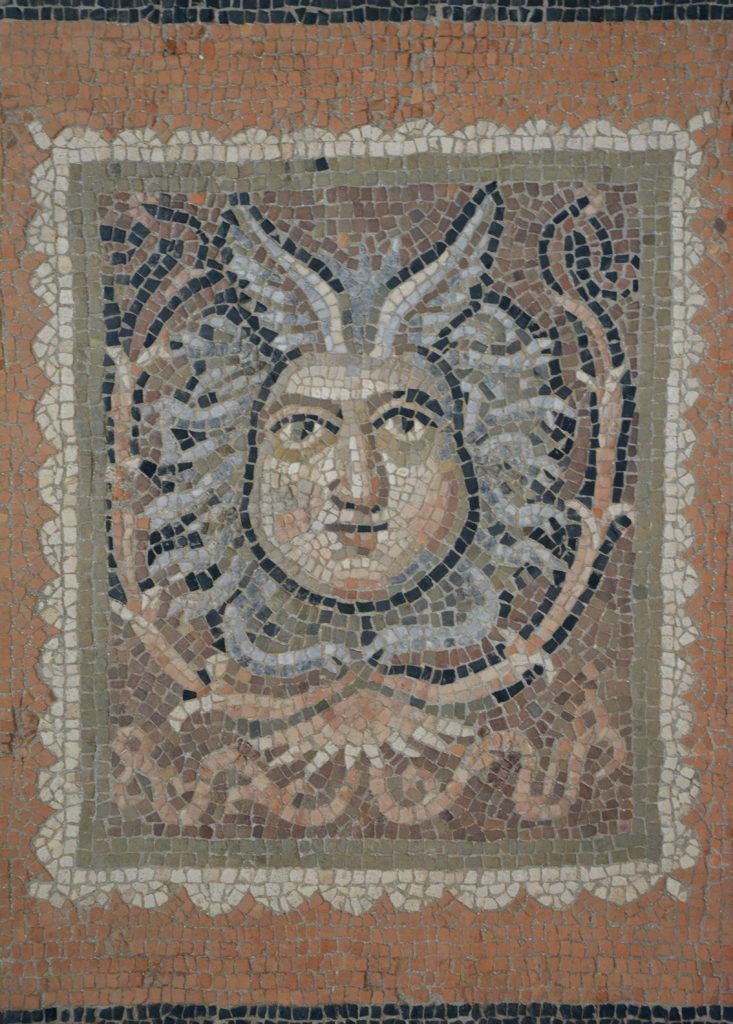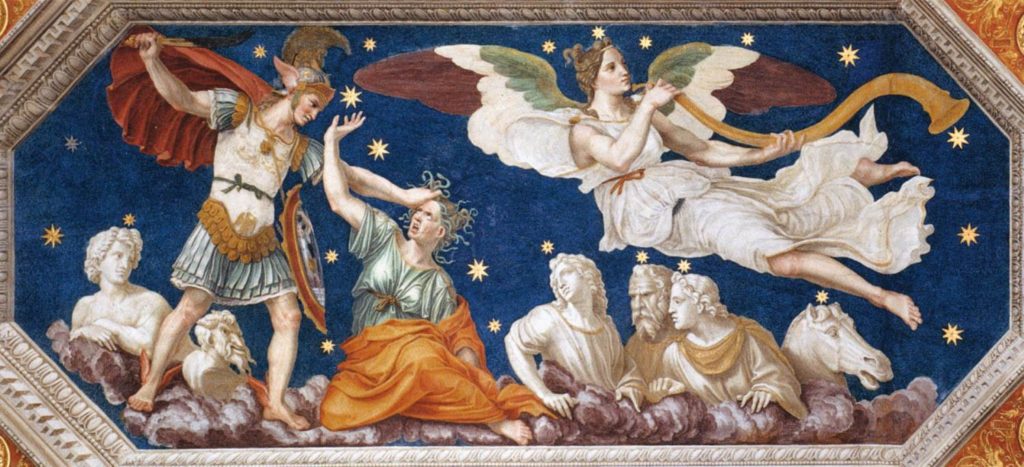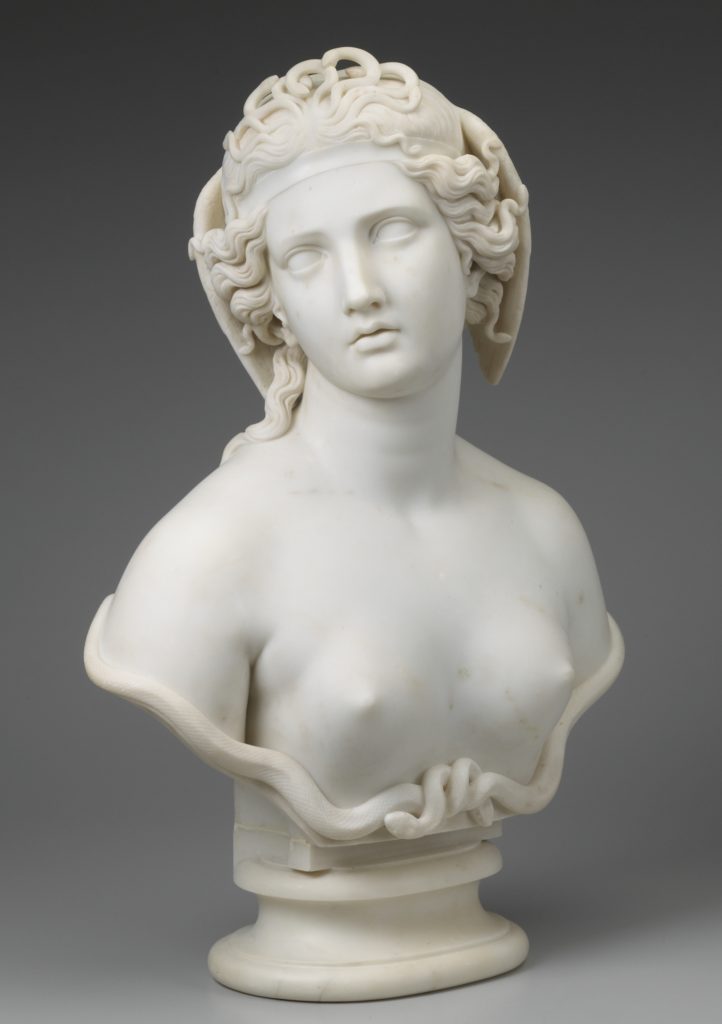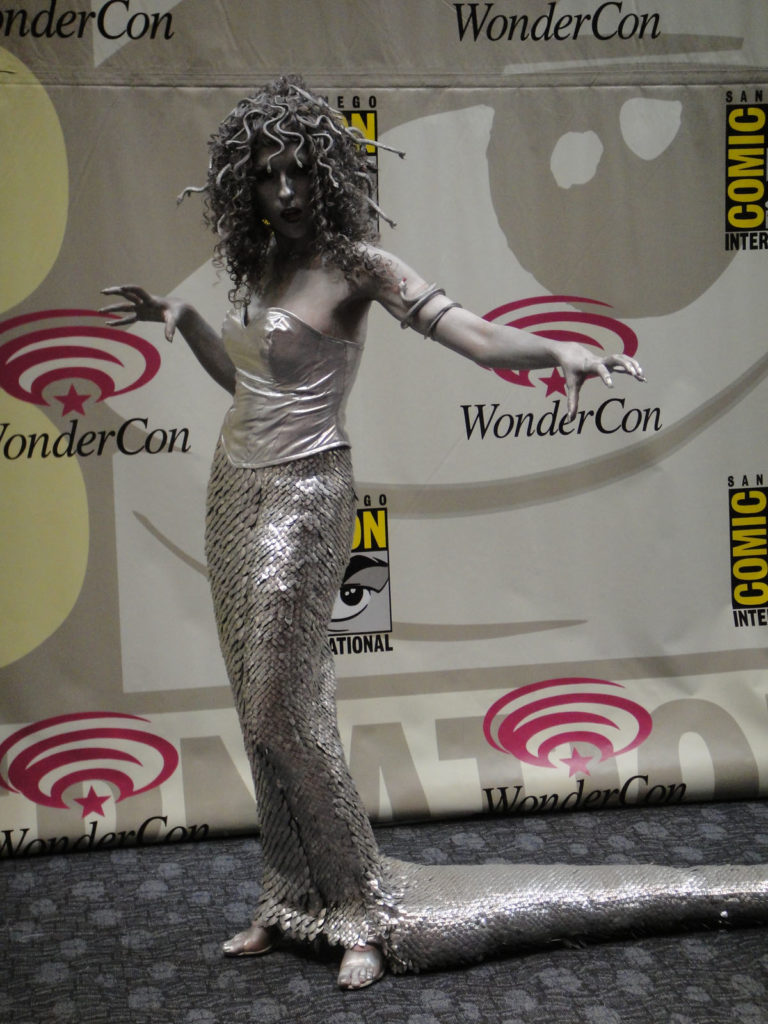I’ve been looking at art work of the goddess Medusa lately, and I’ve been surprised at the amount and breadth of art that is available on this goddess. I was aware of a few much-reproduced classical images and also aware that Medusa is a popular subject among contemporary artists, but the scope of art involving Medusa was surprising even to me. Of course, the amount of historical art available under Creative Commons and Public Domain licenses is to some extent reflective of the popularity of the subject in the early 21st century. Still, there is far too much material to ascribe its availability solely to fashion and fad.
Medusa is the Greek goddess who turned everyone who looked upon her face to stone. She has been depicted and described as both unspeakably beautiful and horrifyingly ugly. Medusa is also referred to as “the Gorgon,” a woman with snakes growing out of her head like hair. Some classical writers insisted that there were two other Gorgons, sisters to Medusa and unlike her immortal. The hero Perseus took up the challenge of slaying Medusa, a task with logistical difficulties since he had to behead her without gazing upon her.
Artwork with Medusa as a theme can be divided into six categories: Greek archaic, classical Greece, Greco-Roman, Renaissance, Romantic, and postmodern (“postmodern” referring here to the time period from 1970 to the present, not to the political philosophy). Art depicting Medusa seems to be varied in all time periods, though the Perseus theme was popular in all periods up to the Romantic, so the following examples from each period are not representative.
